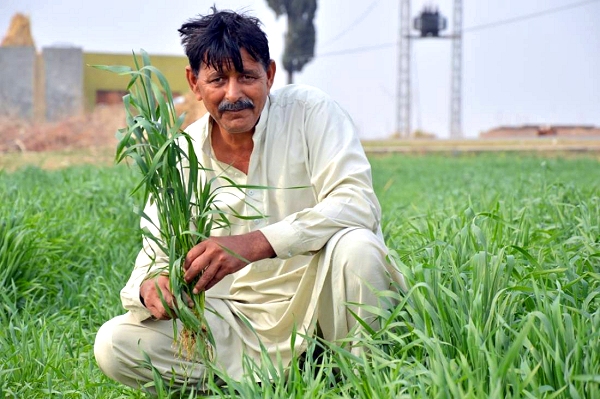
‘Pakistan’s wheat farmers saved by timely weather forecast’

(This story appeared first yesterday on the website of the Thomson Reuters Foundation. It has been edited slightly here for length.)
In early November last year, Muhammad Islam was surprised by news from the Pakistan Meteorological Department. The 40-year-old farmer learned that good rains were forecast for the crucial wheat-growing months of November and December.
That was important information, since farmers in the north-eastern districts of Pakistan’s Potohar region had turned away from wheat – a favoured and high-earning crop – as unpredictable rains over the last decade led to repeated crop failures.
This year, however, they expect their income to increase as they return to wheat production, after years spent planting some of their land with less lucrative vegetables and tending poultry.
Well-timed seasonal rain forecasts from Pakistan’s weather service – something new in the country – are making that possible.
“I would have been, for sure, at a loss and missed the timely wheat plantation had I ignored the rain forecast…on a local news TV channel,” said Islam, who farms 1.6 hectares of land in Bhata village, 50 kilometres from Pakistan’s capital.
Income
Winter rains that traditionally fall in mid-November came as late as the end of December in 2016, part of a trend of erratic rains that has confounded farmers who are entirely reliant on rainfall because they lack irrigation systems.
But last November the meteorological department correctly forecast rain for early November, giving Islam and farmers like him the opportunity to plough their land and be ready to sow.
Islam planted wheat on half his land in the third week of November, leaving the rest for vegetables. By 17 January, he says, the wheat plants had grown to a height of 70cm, whereas in the past eight years they never grew to more than 10cm over the same period.
As a result, he and other farmers in the area expect to get at least 1,200kg of wheat from each acre this year – 30 per cent more than in previous years.
Islam reckons this will increase his own income by around 23,000 rupees (US$ 210).
Wheat is grown on 9 million hectares of land in Pakistan – 30 per cent of which is rain-fed. Each year, the country produces 25 million tonnes of the crop.
About 3 million tonnes of this is grown on the Potohar plateau, comprising Islamabad and the surrounding districts of Rawalpindi, Chakwal, Jhelum and Attock, an area is characterized by subsistence and smallholding.
Farmers usually finish sowing wheat by mid-November, and under normal circumstances two rainy spells in November and December drench the fields, allowing the seeds to germinate.
Erratic rainfall
After two or three more spells of rain in January and February, the harvest begins in April.
But the erratic rainfall of the last decade has pushed farmers to shift to other crops in the Potohar region.
Wheat acreage there has declined by around 30 per cent compared to 10 to 12 years ago, when rains were abundant and predictable and farmers could reliably harvest at least 1,000kg of wheat per acre, according to the Barani Agriculture Research Institute.
Many farmers say they struggle to build rainwater harvesting ponds, use groundwater or adopt the latest efficient irrigation technologies.
“Lack of resources and access to technical know-how are major hurdles in our way to our adapting to the rapidly shifting weather patterns,” said 65-year-old smallholder wheat farmer Safeer Ahmed, from Gujar Khan.
A decade of drought forced Pakistan’s wheat farmers to change to less lucrative crops, but a timely forecast of rains brought fresh hope. (Photo: Thomson Reuters Foundation)